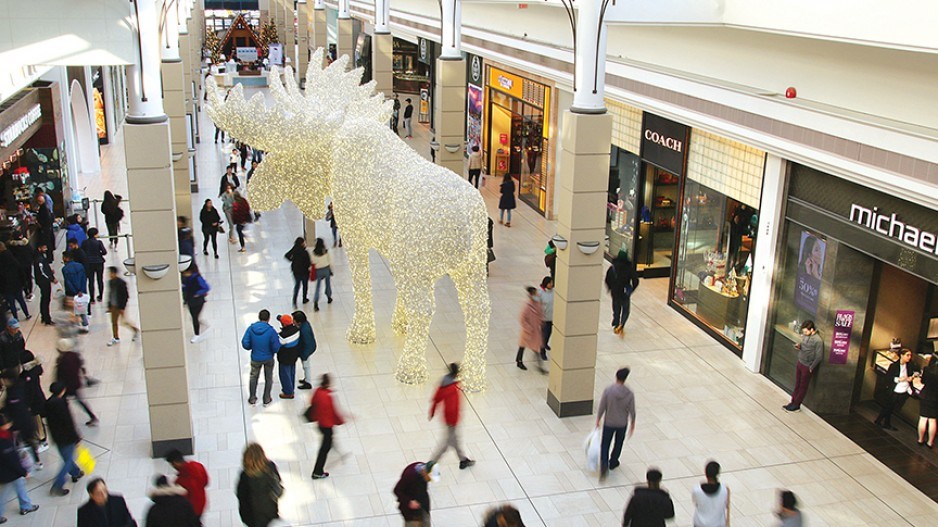B.C. retailers recorded a partial rebound in sales in March following a February plunge, but the softer trend continued, signalling consumer restraint amidst higher interest rates and fear of an economic downturn.
Seasonally adjusted dollar-volume retail sales reached $8.86 billion, which was up 0.9 per cent month to month, but largely unchanged from a year ago. This was led by a two-per-cent increase in Vancouver.
In comparison, national growth fell 1.4 per cent, driven largely by a drop in physical purchases rather than prices.
At the store-segment level, seasonally adjusted data is not published, but year-over-year patterns point to a rebound in vehicle-related sales as inventory may have rebounded (particularly for used cars). Sales in the segment moved from a 10-per-cent shortfall to a modest year-over-year gain of 3.8 per cent. Housing-related spending gained a bit of traction but fell 22 per cent year over year for building and garden materials, while furniture retail sales were 17 per cent lower. This suggests drag from the weaker housing market. Electronic stores posted an acceleration in sales.
Despite the March gain, there are ample signs that consumers are more cautious amidst increasing financial strain. The March monthly gain was insufficient to offset February’s steep decline, and pushed quarterly sales down 1.3 per cent from Q4.
In comparison, national sales rose 0.7 per cent during the quarter. Employment continues to edge up: Population growth is robust and it supports overall spending activity, with consumers adapting to higher interest rates. B.C. debt-to-income ratios are the highest among the provinces, which means that the spike in interest rates over the past year is shifting income toward interest payments and away from general spending. This will only be amplified as more fixed-rate mortgages renew in the coming year. Moreover, rents remain elevated, and services inflation is likely to curb spending on goods despite firm wage growth.
An economic slowdown that prevails through 2023 is forecast to hold retail sales growth near one per cent this year.
Overall, the number of non-resident visitors entering Canada through B.C. declined in March. On a seasonally adjusted basis, there were 4.4 per cent fewer visitors in March than there were in February, coming in at around 627,000. This was the second straight month of declining visitors. Overnight excursions led the decline with 6.9 per cent fewer visitors, while same-day excursions remained essentially unchanged with an increase of 0.8 per cent.
The number of U.S. residents visiting was down 4.2 per cent from February to March. This was a similar change compared to the number of visitors from other countries, which declined 4.7 per cent for the month of March.
Among U.S. residents, the decline was seen across all modes of transportation, with the category of “other” leading the way, down 9.8 per cent. Air travel to Canada from U.S. residents was also down 4.3 per cent, and the number that came via automobile fell 1.7 per cent. Residents from other countries saw a 3.2-per-cent decrease when coming by air and saw an 11.8-per-cent decrease when coming by land or water.
Bryan Yu is chief economist at Central 1.




